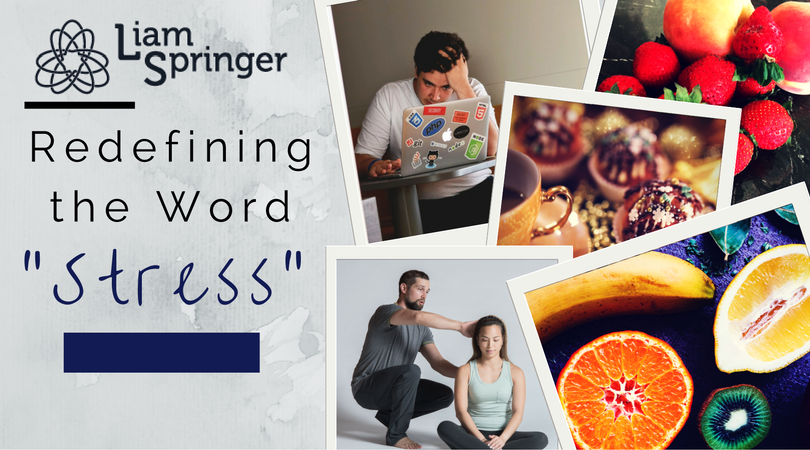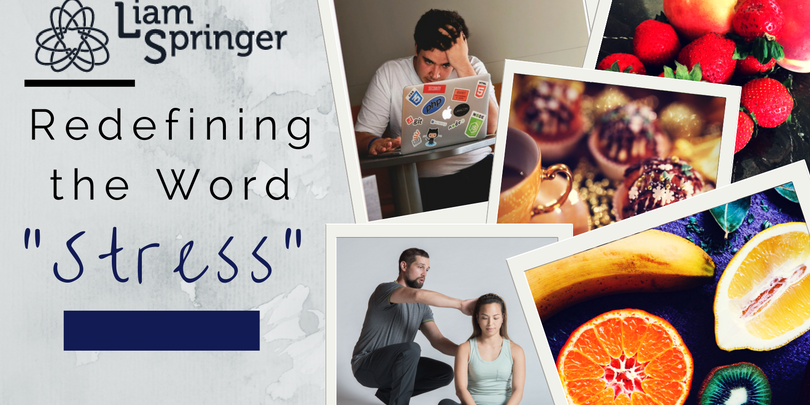
People often talk about “holiday stress.” But what does that really mean? Are the holidays stressful in and of themselves? Why do tasks like holiday shopping, decorating, cooking, and wrapping presents stress some people out, while making others feel joyful and cheery? These two very different responses to so-called “stressful” events help to highlight the common misuse of the word “stress” in our culture. The reality is that some people don’t experience “stressful” situations as stress. Rather than becoming overwhelmed by the demands of the holidays this year, give yourself the tools that will help you welcome these challenges and experience them as inspiring and motivating.
What Exactly Are We Talking about When We Talk about “Stress”?
Let’s back up a little and discuss the definition of “stress.” To put it simply, the body undergoes stress any time it encounters a challenge that is not easily overcome. Stress is usually thought of as mental or psychological, stemming from stressors like a tight deadline at work, a fraught relationship, or even the difficult task of hosting a large family gathering. However, there are many different types. These can be divided into five categories: mental, physical, emotional, nutritional, and toxic—all of which are interconnected. Learn more about the Five Categories of Stress.
A New Way of Viewing Stress
It’s important to realize that the experience of “stress” (and the perception of what is “stressful” vs. what is not) varies widely among individuals. While that tight deadline at work or big family gathering may elicit the stress response in some, others may welcome the challenge and even be inspired by it. For the former group, the deadline presents an overwhelming level of challenge. But for the latter group, the deadline is not “stressful” at all—and it does not pose any threat to their health.
Dealing with Stress in the Modern World
Stress is a significant consequence of living the fast-paced, modern lifestyle that has become so common in the United States and other parts of the world. Stress can have a huge impact on health; its risks include heart disease, anxiety, metabolic dysfunction, and more.
One way to reduce the risks of stress is by decreasing your global stress load. Another way is by conditioning your autonomic nervous system—the system responsible for responding to stressful events. The ELDOA method of exercise is a tremendous tool for improving autonomic health—which will, in turn, increase your ability to respond to and recover from stress more efficiently. Yet a third way is by consuming a high-quality diet.
Today’s world is full of potential stressors. You can help optimize your ability to handle the various challenges you encounter day to day by:
- Reducing your global stress load
- Conditioning your autonomic nervous system
- Eating a high-quality diet
The third method listed above is perhaps the most important when it comes to reducing the health risks of stress. Good nutrition is a highly effective tool for preparing your mind and body to readily meet challenges, rather than become overwhelmed by them. To achieve optimal brain function and improve your ability to handle stress, it’s important to eat a diet that promotes glucose metabolism and provides sufficient blood sugar.1-6 When you’re feeling stressed, skip the typical holiday junk food and instead eat a diet high in fruits that are very ripe, sweet, juicy, and low-fiber. You can also consume salty cheeses to help restore mineral balance.
That being said, keep in mind that it’s perfectly okay to indulge in your favorite holiday treats—within reason. For more info on holiday eating and the concept of reasonable allowance, read my previous post: 6 Guidelines for Healthy Holiday Eating.
Remember: Good nutrition is a highly effective tool for preparing your mind and body to readily meet challenges, rather than become overwhelmed by them.
For more insights on the latest topics in health and nutrition, sign up for my monthly newsletter. Want to try a new exercise method that’s great for posture, strength and stability, and flexibility? Join us for ELDOA group classes right here in St. Louis!
References
- Baxter LR Jr, Phelps ME, Mazziotta JC, et al. Cerebral metabolic rates for glucose in mood disorders. Studies with positron emission tomography and fluorodeoxyglucose F 18. Arch Gen Psychiatry 42, No. 5 (May 1985): 441–7. http://www.ncbi.nlm.nih.gov/pubmed/3872649
- Constant EL, de Volder AG, Ivanoiu A, et al. Cerebral blood flow and glucose metabolism in hypothyroidism: a positron emission tomography study. J Clin Endocrinol Metab 86, No. 8 (Aug 2001): 3864–70. http://www.ncbi.nlm.nih.gov/pubmed/11502825
- Llewellyn-Smith IJ, Verberne AJM, eds. Central Regulation of Autonomic Functions,2nd ed. Oxford University Press, 2011.
- Moreira-Andres MN, Black EG, Ramsden DB, et al. The effect of calorie restriction on serum thyroid hormone binding proteins and free hormone in obese patients. Clin Endocrinol (Oxf) 12, No. 3 (Mar 1980): 249–55. http://www.ncbi.nlm.nih.gov/pubmed/6771066
- Ruhla S, Arafat AM, Weickert MO, et al. T3/rT3-ratio is associated with insulin resistance independent of TSH. Horm Metab Res 43, No. 2 (Feb 2011): 130–4. http://www.ncbi.nlm.nih.gov/pubmed/21104580
- Teves D, Videen TO, Cryer PE, et al. Activation of human medial prefrontal cortex during autonomic responses to hypoglycemia. PNAS 101, No. 16 (Apr 2004): 6217–21. http://www.pnas.org/content/101/16/6217.full








1 Comment